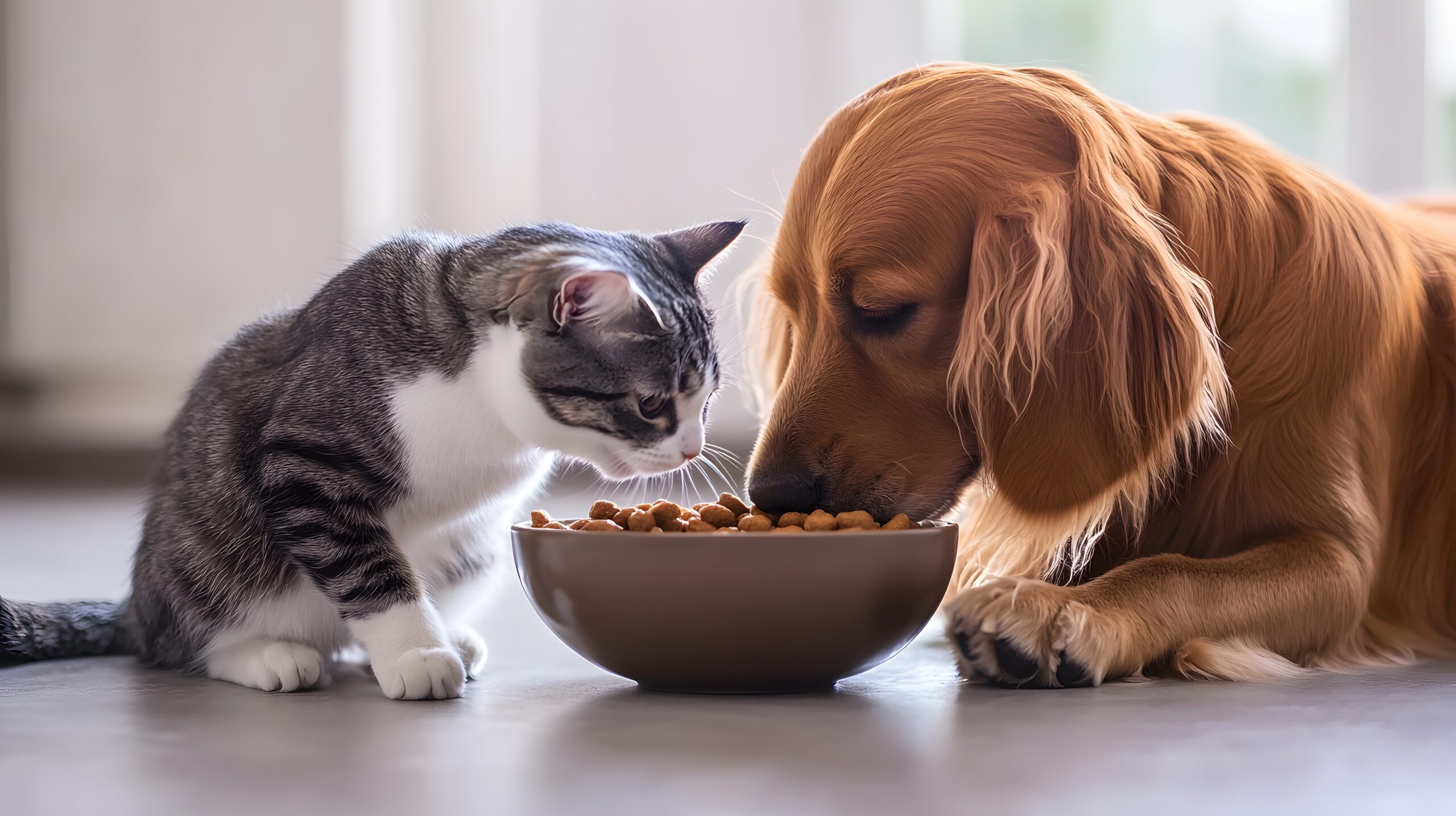I’ve worked with hundreds of pet parents over the years, loving, well-intentioned, deeply devoted people who would do anything to help their animals thrive. But if there’s one topic where love and misinformation often collide, it’s nutrition.
As a veterinarian with a background in clinical nutrition, I’ve seen firsthand how powerful the right diet can be in managing everything from kidney disease to obesity, pancreatitis to food allergies. I’ve also seen how easily good intentions can go sideways when pet parents rely on marketing claims, TikTok tips, or a friend’s advice instead of science.
Let’s clear the air on some common misconceptions, and more importantly, let’s talk about how to feed our dogs and cats better, starting today.
1. “If It’s Sold in a Store, It Must Be Safe and Balanced.”
This is probably the most widespread myth. Many pet owners assume that if a food is on the shelf, or even labeled “premium” or “natural”, it meets all the nutritional needs of their pet.
But here’s the truth: not all pet food is created equal, and not all are truly complete and balanced.
Look for the AAFCO statement on the bag or can. This tells you whether the food meets the minimum nutritional requirements for your pet’s life stage (puppy/kitten, adult, or senior). Without this, there’s no guarantee the food provides what your pet actually needs to survive, let alone thrive.
2. “Grain-Free Is Better.”
Unless your pet has a confirmed grain allergy (and those are very rare), grain-free diets may do more harm than good.
In recent years, we’ve seen a concerning link between grain-free diets and canine dilated cardiomyopathy (DCM), a potentially fatal heart condition. While research is still ongoing, many cardiologists and nutritionists are urging caution.
Whole grains like brown rice and oatmeal can be excellent sources of fiber, vitamins, and energy. Don’t demonize grains without cause. The problem is not the presence of grains, but often the excessive use of legumes or potatoes to replace them, which may affect taurine levels and heart health.
3. “Raw or Homemade Is the Healthiest Way to Feed.”
I get it. The appeal of raw or homemade diets is strong, especially if you’re someone who eats clean yourself. But these diets often lack crucial nutrients, unless they’re carefully formulated by a board-certified veterinary nutritionist.
In practice, I’ve seen homemade diets with:
- Too much or too little calcium and phosphorus (critical for bone health)
- Vitamin D toxicity from over-supplementation
- Protein sources that are inappropriate for a pet with kidney or liver disease
Raw diets also carry a risk of bacterial contamination (for both pets and humans) and may not be safe for immunocompromised animals.
Want to cook for your pet? Great, just work with a vet who specializes in nutrition to get it right.
4. “My Pet Is Overweight, But It’s Just a Few Pounds.”
I promise I’m not being dramatic when I say this: a few extra pounds can shorten your pet’s life. A 2018 study showed that dogs who maintained a healthy body condition lived up to 2.5 years longer than their overweight littermates.
Obesity increases the risk of:
- Arthritis
- Diabetes
- Heart disease
- Certain cancers
If I gently mention weight concerns during a visit, it’s not to shame, it’s to help your pet feel better, move easier, and live longer. Together, we can find a diet plan that supports healthy weight loss without depriving your pet of enjoyment.
5. “If My Pet’s Not Vomiting or Scratching, the Food Must Be Fine.”
Subtle signs of poor nutrition often fly under the radar:
- A dull coat
- Chronic soft stool or flatulence
- Low energy
- Frequent ear infections or skin issues
- Bad breath despite dental cleanings
These may be nutrition-related. The absence of vomiting doesn’t mean the diet is ideal, it just means it’s not causing acute problems. Let’s aim higher than “not vomiting.”
6. “I Don’t Need a Vet to Talk About Food.”
I know nutrition advice is everywhere: blogs, YouTube, pet store clerks. But veterinary nutrition is a science, not a guessing game. I’ve had years of training in this area and still learn more every month. It’s not about selling a particular brand, it’s about using food as part of medical care.
Whether your pet is perfectly healthy or has complex health issues, their food should match their breed, age, lifestyle, and medical history. No influencer or bag label can account for that the way your vet can.
A Simple Way to Start
If you’re feeling overwhelmed or unsure what to feed, start here:
- Check the label for an AAFCO statement.
- Choose a food that matches your pet’s life stage and health needs.
- Ask your vet (yes, really!) for their recommendation based on your pet’s exam and lab work.
And if your pet has a chronic illness or unique dietary needs, ask about a referral to a veterinary nutritionist. They can even formulate custom diets tailored to your pet.
Nutrition Is Medical Care
The food you give your dog or cat isn’t just fuel, it’s treatment. It’s prevention. It’s daily medicine disguised as dinner. And when you get it right, it can support everything from immune function to joint health, energy, and longevity.
So don’t leave it up to marketing. Let’s talk about what’s really in that bowl.
